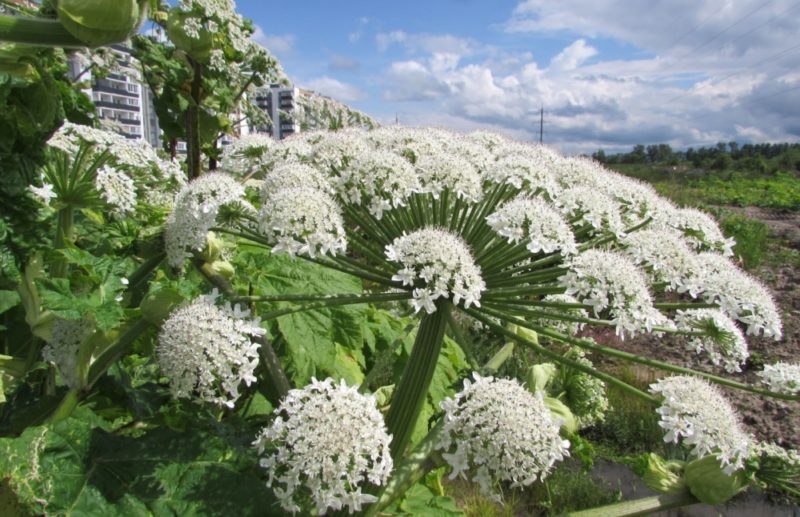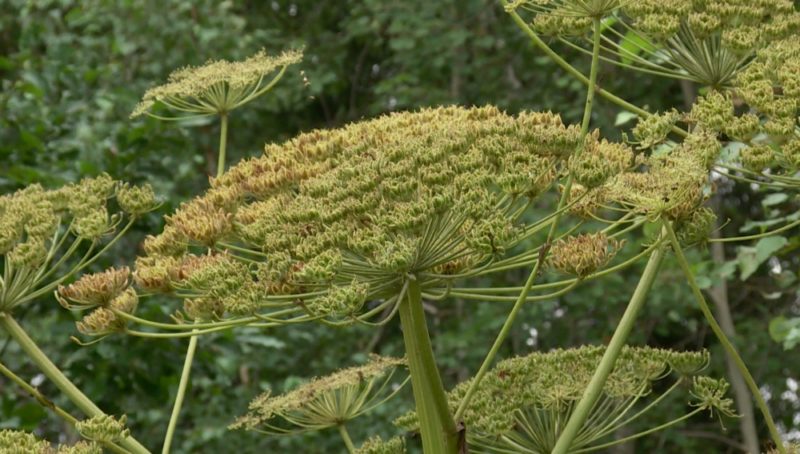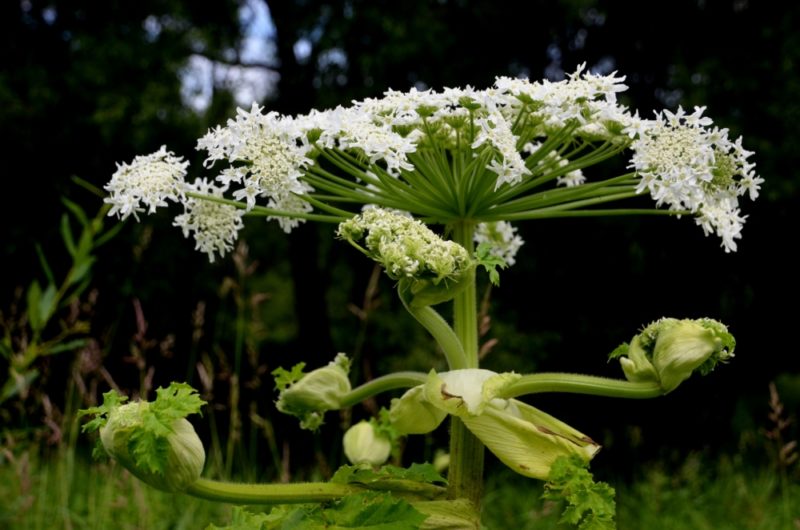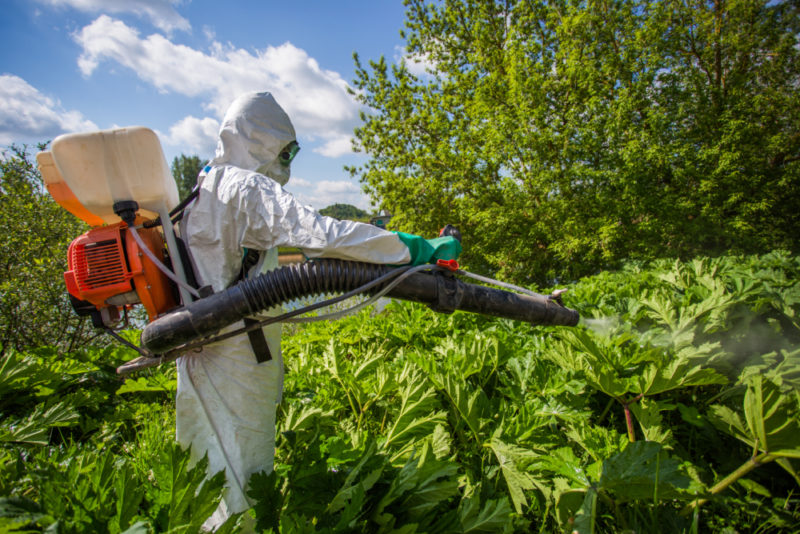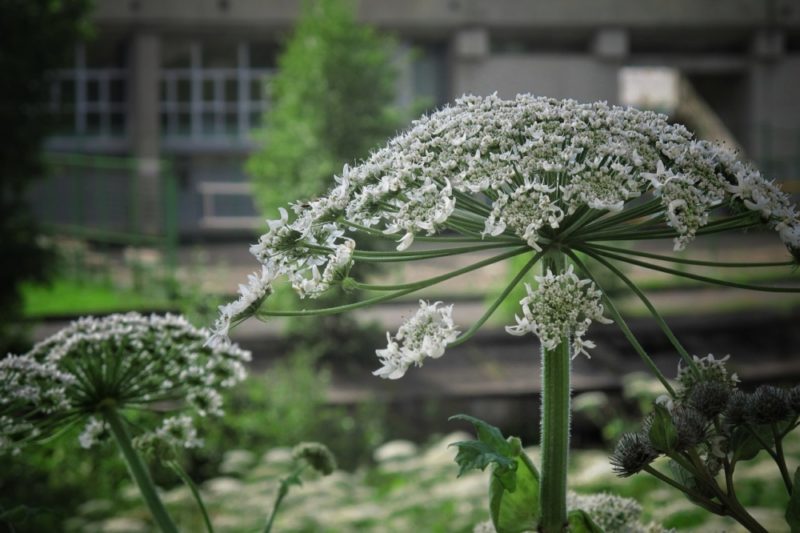In every country, except the Red Book with rare plants protected by the state, there is also a Black Book with invasive species that threaten biological diversity. Sosnovsky hogweed, a dangerous poisonous weed that is difficult to destroy, got into it on the territory of Russia.
Material Content:
The history of the appearance of hogweed Sosnowski in Russia
A hogweed was brought to the fields of the Leningrad Region and other regions of Russia from the Caucasus, from warm Georgia, where it was first described as a species in 1944. In the new territory, he liked it; it turned out to be hardy to adverse weather conditions and frost-resistant.
In Soviet times, experts felt that this plant can become an excellent fodder crop. It is able to form a green mass of up to 2 thousand centners per hectare. Hogweed contains vitamins, minerals, antibacterial substances. Since 1947, it began to be sown in fields throughout the USSR. Breeders bred new, more stable and productive varieties, not realizing that they were creating a monster.
It soon turned out that the plant gives meat and milk a special unpleasant odor. And if there is other food, livestock, in general, refused to eat silage from the cow parsnip. The burns received by people as a result of inadvertent contact with the plant brought him notoriety. Around the 80s, Sosnowski hogweed, whose history was associated with the post-war devastation, was finally stopped growing for agricultural purposes.
Its introduction into culture after the Second World War was justified by the difficult economic situation. At that time, the plant fully fulfilled its role.Man is guilty of the fact that the cow parsnip has now gotten out of control and introduced into the natural vegetation cover, displacing natural species from the fields. There was no control over the distribution of the plant, it was not fully studied. In the 70s of the last century, uncontrolled spread became widespread.
View description
Under natural conditions, Sosnovsky’s hogweed grows in the forest zone, prefers open glades and forest edges, and is found along roadsides, on abandoned fields, and along water bodies. It prefers to grow in sunny open areas with moist and fertile soil. The height of the stem can be more than 2 meters.
An interesting feature of the plant is that it propagates only by seeds. But this is enough for aggressive seizure of territories.
One copy of the hogweed produces about 20 thousand seeds per year, which do not lose germination up to 5 years. The root system goes to a depth of 3 meters.
Now the hogweed has occupied large areas. In the Northwest, initially about 1 thousand hectares were allocated for it, but after half a century it occupied already more than 100 thousand hectares. In 2012, a decision was made in Russia to combat the invasive species, and funds were allocated for this from the state budget. Only agricultural land and roadsides fall under this program, while privately owned garden plots remain the concern of the owners. Therefore, it is important for every gardener and gardener to know how to properly destroy Sosnowski hogweed in his area.
What is dangerous plant
Furanocoumarins - substances that are contained in pollen and juice of hogweed, make the skin susceptible to ultraviolet radiation from the sun, which is why burns appear. Damage to the skin will be fatal if they cover more than 80% of the body. Complete blindness may occur after exposure to hogweed juice on the eyes. Such cases occurred when the children used the hollow trunk of the plant to play the “spyglass”.
Of particular toxicity is an adult plant during flowering. It is dangerous to get the juice of the leaves or the stem on the mucous membrane of the mouth, where painful burns remain. Therefore, advice on the use of young green plants in vitamin salads should not be taken seriously.
Burns from the hogweed Sosnowski
A poisonous plant leaves burns on the skin, which intensify when exposed to light.
The influence of hogweed on a person depends on the degree of sensitivity of the dermis. Sometimes the traces left by the plant may not go away during the year.
If the skin is sensitive, 3 degree chemical burns remain, with painful blisters, then they burst, and wounds that do not heal for a long time are formed.
Treatment with Panthenol after contact with the weed is ineffective, since its juice leaves chemical burns. If blisters form on the skin, they must not be oiled or punctured. An infection will get inside, and ugly scars will remain on the skin.
First aid
If poisonous plant juice gets on your skin, you should immediately leave the room to prevent sunlight from entering the affected area. If there is nowhere to hide, the part of the body where the juice got, after washing with water, must be covered with several layers of tissue from the sun.
First aid:
- It is advisable to rinse hogweed juice immediately under running water using soap.
- Drink an allergy medicine.
- Drink ibuprofen or paracetamol to reduce pain.
- Make for 15 minutes. lotion with furacilin, diluting 3 tablets in 0.5 l of boiled water.
- Treat the skin with an ointment containing zinc. You can use baby powder, if there is zinc.
- For quick healing, lubricate the wounds with lavender oil (if there are no blisters).
In the future, daily lotions are made with chamomile broth on the affected areas, they avoid going outside in the daytime until the wounds heal. With severe burns, hospitalization in a hospital is necessary.
You can not treat burns from hogweed on their own in young children. For them, even a little contact with the plant can result in a dangerous injury.
Do-it-yourself poison weed control
There are several methods of dealing with hogweed:
- agrotechnical - the soil must be cultivated and used;
- mechanical - single specimens from the site need to be dug with a root to a depth of about 30 - 40 cm and destroyed, large areas are mowed out before flowering;
- chemical - treatment with herbicides for 5 years.
The least effective mechanical removal is the mowing of green bushes before flowering. This will have to be done 1 time in 2 to 3 weeks, approximately 6 times during the summer. However, the rhizome will still remain viable and in the spring will give a new green shoot. Single instances are easier to destroy by digging. Rhizome of hogweed up to 3 meters long, so it is completely impossible to extract it. But it is enough to cut the root at a depth of 30 - 40 cm to destroy the kidneys of renewal.
The use of herbicides is more efficient and easier, but there are some peculiarities. Do not exceed the recommended concentration of the drug, otherwise it will burn the green part of the plant in a few days, and the root system will remain intact, and will again sprout. It is also a mistake to mow the weed, and then only use the herbicide. This reduces the effectiveness of the drug. The fight against cow parsnip should begin when it has grown to the knee.
Herbicides belonging to glyphosates, for example, Ground, are suitable for chemical destruction.
It is necessary to follow the instructions for the preparation of the working solution and the processing time. Glyphosates belong to hazard class 3 substances, but can contribute to the development of skin cancer. Therefore, during processing it is necessary to use a high-quality sprayer and personal protective equipment - gloves, a respirator, glasses, special clothing and shoes. The weather should be calm and dry.
In the future, it should take about 1 month for the hogweed to be sprayed with the herbicide to die. Only when the stalks completely turn yellow do they begin to harvest the weed and destroy it. The herbicide must not be allowed to enter cultivated plants that grow on the site - they will also die.
Destruction services
If the acquired plot of land is heavily overgrown with hogweed, it is better not to try to destroy the weed by weeding or mowing - you can easily earn a burn. It is impossible to allow the beginning of flowering, because the seeds ripen due to the accumulated nutrients in the stems and leaves. They disperse and a new generation of weed grows. The most effective method of control is chemical treatment. It allows you to destroy the root system and the aerial part of the plant.
If there is no experience and special equipment for working with herbicides, you can use the services of a company to destroy weed.
The company will calculate the cost depending on the area of the site, the amount of cow parsnip, the stage of its development and the quality of the herbicide used.
When the treated plants dry, they are dug up with the root and burned. To prevent seeds from springing up, it is advisable to change the topsoil. You can cover the plot with black agrofibre, then weeds will not sprout either.
Fine for the cow parsnip on the plot
Tens of millions of rubles are allocated from the state budget to fight hogweed. Therefore, in the Moscow region they decided to punish owners of uncultivated land with a fine. If agricultural land is not used, the owner or tenant pays a higher tax. The issue of introducing large monetary fines is being decided.
You can find information on the Internet, and sometimes on television, that Sosnovsky’s hogweed at a young age is very useful - you can cook borscht from it, you can add it to salads. Indeed, according to one version, borshch got its name, because once the hogweed was its main component.However, we are talking about Siberian hogweed - this is another type of plant. Having noticed a dangerous weed on the site, you need to destroy it without regret as soon as possible.


